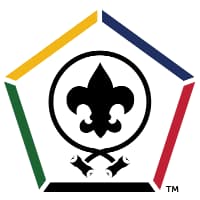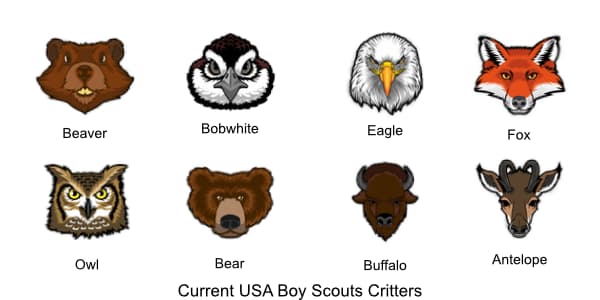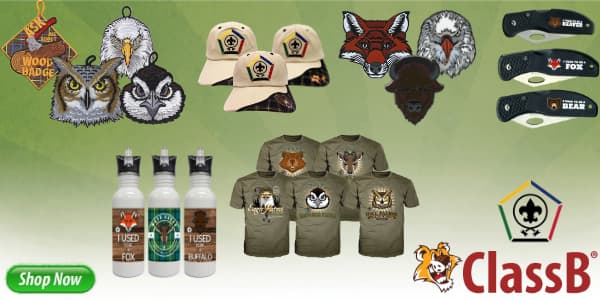What is Wood Badge?

History of Wood Badge
Baden-Powell developed the first Wood Badge course in 1919. This course originally took place at Gilwell Park located in London, UK. Wood Badge started as a way to get Scouters and adults in leadership roles within the Boy Scouts as a way to develop and strengthen their skill sets in an environment that reflected the community. This included outdoor activities and classroom learning while also instilling in Scouters the Boy Scout’s core values.

Robert Baden-Powell
The First Wood Badge Course
The first Wood Badge course that Baden-Powell put on was 12 days long which allowed Scouters the ability to hone in on the purpose behind the course and unlike today the course only had three original patrols. Those patrols included the Bulls, the Cuckoos, and the Ravens. As the course expanded to different countries it’s original aspects would change.
Current State of Wood Badge in America
Wood Badge is a six-day hands-on course that runs for six consecutive days or throughout two weekends. The course is put on by the local Boy Scouts of America Councils across the United States. Scouters must an at least 18 years old and currently registered as a member of the Boy Scouts of America to participate in the course.
When Scouters arrive at the courses location they will be divided into different patrols signified by critters. The order of the critters is as followed: Beaver, Bobwhite, Eagle, Fox, Owl, Bear, Buffalo, Antelope. Each patrol unit will have a patrol leader and between six to eight scouts. The patrols will be assigned randomly to ensure there is fairness amongst all of the groups. Scouters can expect to do a variety of skill strengthening and team-building activities outdoors and in a classroom setting.
Attending Wood Badge
Attending Wood Badge is a great opportunity for individuals and units to gather knowledge on leadership skills and the Scouting method. These skills add value to both the Scouter’s units back home and their personal life. By strengthening these skills Scouters are setting their units up for success and strong leaders. A few of the different skills Wood Badge looks to help its Scouters strengthen are leadership, active listening, conflict resolution, and working as a team. Although there are more skills that Scouters can expect to learn and develop by taking this course these are the main ones.
Wood Badge Tickets
When coming to Wood Badge it is important to know that each person will have to complete a Wood Badge Ticket within 18 months of finishing the six-day course. This ticket is a set of five goals that individuals will come up with to help strengthen their skills and their home Scouting units. To do this a person must identify their role within a unit, determine what kinds of skills they have and how strengthening those skills will help strengthen their units. Individuals can also choose to create goals focused on new skills they want to obtain and how they can strengthen those. To start a person must do self-reflecting, followed by deciding on attainable goals, then determine what steps to take as well as the timeline, and finally, that individual must start working towards the end goal.
SMART Goal Setting
An acronym that is popularly used when doing Wood Badge tickets is “SMART”. This acronym stands for specific, measurable, attainable, relevant, and timely. When creating goals Scouters want to be specific with the wording of the goal, this is because the Scouter will have to make clear steps to how the goal will be achieved. The goal needs to be something that can be measured so the Scouter will have to determine what measurements will determine the progress of their goals. When making a goal attainable the goal needs to be something that can be completed by the deadline. When creating a goal that is relevant the Scouter needs to ensure that the goal aligns with their overall values of what they are trying to achieve. Timeliness is when the Scouter determines when they want to meet their targeted goal, to do this a Scouter can make deadlines for themselves to achieve specific parts of the goal to ensure by the deadline of the goal itself they have completed all of the parts. Using this acronym and steps individuals set themselves up for success in completing their Wood Badge ticket in the 18-month timeframe.

Wood Badge Ticket Completion
As part of finishing the Wood Badge course and individual tickets Scouters will receive the following to commemorate their achievement: a certificate of completion, a neckerchief, a leather slide, and two small wooden beads on a leather thong. The event has evolved and grown over the years but through it, all the core values of Wood Badge are still intact. This course is amazing for Scouters wanting to grow and evolve. Attending this course will also set individuals up for gaining lifetime connections and a sense of belonging within the Scouting community.

Wood Badge Tartan Neckerchief, woggle, and two small wooden beads on a leather thong.

